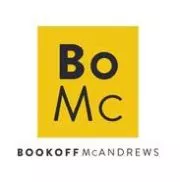TAKEAWAY: Proper inventorship for a U.S. patent application or patent directed to an invention assisted by artificial intelligence (AI) requires a significant contribution by at least one human to each claim of the application or patent.
On February 13, 2024, the U.S. Patent and Trademark Office (USPTO) published Inventorship Guidance for AI-assisted Inventions ("Guidance") responsive to the Executive Order on the Safe, Secure, and Trustworthy Development and Use of Artificial Intelligence ("Order") issued by President Biden on October 30, 2023. Recognizing the importance and power of artificial intelligence (AI) in innovation, along with the potential for irresponsible use, the Order, in part, tasked the USPTO to address inventorship and the use of AI in the inventive process.
The recent Federal Circuit decision in Thaler v. Vidal determined an AI system cannot be a named inventor on a patent application because the Patent Act requires an inventor to be a natural person (i.e., a human). Referencing this decision, the Guidance confirms that only natural persons may be named inventors on a patent application or patent. However, for AI-assisted inventions, the inability to name a non-natural AI system that contributed to the invention does not result in improper inventorship, and thus does not render AI-assisted inventions categorically unpatentable. Rather, for determining proper inventorship, the Guidance treats inventorship of AI-assisted inventions as a joint inventorship issue between at least one human and an AI system, and applies the joint-inventorship standard of "significant contribution".
As set forth in Pannu v. Iolab Corp., to qualify as a joint inventor, a person must satisfy the following factors: "(1) contribute in some significant manner to the conception [], (2) make a contribution to the claimed invention that is not insignificant in quality, when that contribution is measured against the dimension of the full invention, and (3) do more than merely explain to the real inventors well-known concepts and/or the current state of the art[.]" The Guidance emphasizes the highly fact-dependent application of the Pannu factors on a claim-by-claim basis to determine whether a person's contribution rises to a significant contribution.
Recognizing the lack of a bright-line test makes application of the significant contribution standard difficult, the USPTO, as part of the Guidance, has provided a list of guiding principles for applying the significant contribution standard to AI-assisted inventions:
- A natural person's use of an AI system in creating an AI-assisted invention does not negate the person's contributions as an inventor.
- Merely recognizing a problem or having a general goal or research plan to pursue does not rise to the level of conception.
- Reducing an invention to practice alone is not a significant contribution that rises to the level of inventorship.
- A natural person who develops an essential building block from which the claimed invention is derived may be considered to have provided a significant contribution to the conception of the claimed invention even though the person was not present for or a participant in each activity that led to the conception of the claimed invention.
- Maintaining "intellectual domination" over an AI system does not, on its own, make a person an inventor of any inventions created through the use of the AI system.
In addition to outlining the standard for determining proper inventorship in AI-assisted inventions, the Guidance further details the impact of inventorship determination in AI-assisted inventions on other aspects of patent practice.
The Guidance went into effect on the publication date of February 13, 2024. In conjunction with the Guidance, the USPTO issued two examples with hypothetical claims and scenarios illustrating how inventorship is determined for AI-assisted inventions in accordance with the Guidance. The USPTO has an AI-related resources webpage that includes the full text of the Guidance along with the examples.
The USPTO is seeking public comments on the Guidance, and may modify the Guidance or issue supplements and/or additional examples based on the feedback received. With respect to AI-assisted inventions, the USPTO acknowledges that the issue of inventorship addressed by the Guidance is only one patent law issue in which questions have arisen. To fully respond to the Order, the USPTO is next tasked with providing guidance to address other AI-related considerations, such as updated guidance on patent eligibility.
Originally published February 20, 2024
The content of this article is intended to provide a general guide to the subject matter. Specialist advice should be sought about your specific circumstances.

